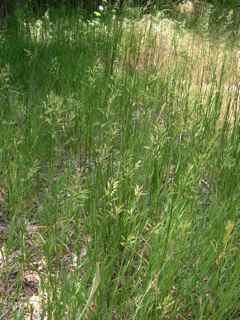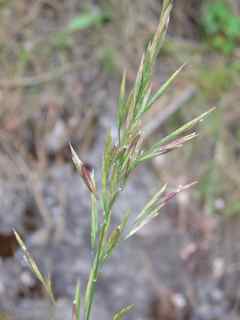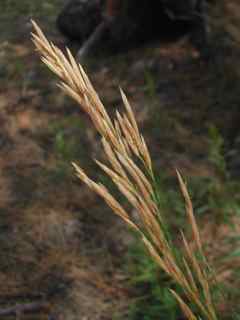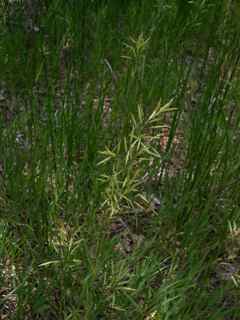|
|
 Plant - summer Red Rock State ParkMax Licher @http://swbiodiversity.org, Usage Rights: Creative Commons Attribution-ShareAlike (CC BY-SA) |  Spikelets Rim Country N. of SedonaMax Licher @http://swbiodiversity.org, Usage Rights: Creative Commons Attribution-ShareAlike (CC BY-SA) |  Spikelets Rim Country N. of SedonaMax Licher @http://swbiodiversity.org, Usage Rights: Creative Commons Attribution-ShareAlike (CC BY-SA) |  Seedheads - summer Red Rock State ParkMax Licher @http://swbiodiversity.org, Usage Rights: Creative Commons Attribution-ShareAlike (CC BY-SA) | | |
|
| | |
Origin: Introduced Season: Cool and Warm
Habitat Description: Found in disturbed areas, frequently escapes to roadsides, ditches and moist wooded areas.
Plant Communities:Disturbed Areas
Elevation: 6000 - 9000 feet
Similar Species: B. pumpellianus, B. riparius
Desc:
Tall rhizomatous sod forming perennial, blades wide and long, seedhead robust.
Identification Notes: Perennial rhizomatous plant, with erect smooth, one or few seedhead stems; 20 to 50 inches tall; smooth sheaths; most blades have a pinched area that looks like a “Wâ€; nodes and leaf blades rarely hairy.
Grass Type: Perennial bunchgrass Rhizomes: Y Stolons: N
Large Dense Clump (> 2 feet): N Bushy (highly branched): N
Height with Seedheads: 24 to 36 inches
Seedhead Structure: Branched - open and spreading Seedhead Droops: N
Flowering Period: Jun - Sep
Number of Flowers per Spikelet: Multi-flowered Spikelets One-sided: N
Awns: Less than 1/4 inch Three Awns: N Awns Bent: N
Flower and Seedhead Notes: Seedheads are erect with ascending branches. Spikelets not strongly flattened, round in cross section before flowering. First glume 1-nerved. Lemmas awnless or with very short awns.
Blade Hairy:
Y
Blade with White Margins:
N
Blade Cross section:
Flat
Blade Notes:
Blades 4 to 17 inches long, 1/4 to 3/4 inch wide, flat, usually smooth without hairs, rarely clothed with soft hairs or down.
Sheath Hairy:
Y
Tuft of Hairs at top of Sheath or Collar:
N
Ligules:
Membranous
Auricles (Ear-like lobes at collar area:
Y
Forage Value:
Good, widely planted in the United States for pasture and hay.
|
|